Oregon's antiquated logging laws and the ever-increasing push for industrial profits continue to contribute to the pollution of potable rivers and streams, the decimation of once-diverse forests, and emission of greenhouse gases to the atmosphere.
In a rural woodland about 30 minutes outside of Eugene, Oregon, intermittent sunlight filters through the high branches of conifers, bathing the earth below in soft sunspots. Hairy, green moss clings to this sparse smattering of thin trees, each of similar species and stretching about 50 feet into the sky. They dance in the slight breeze, their disturbed leaves and branches the only sound in a quiet wilderness just off the road. Occasional sticks and vines traverse the otherwise fairly navigable floor. While this may sound like a well-maintained and thriving forest, looks can be deceiving.
The biodiversity of rural Oregon forests is not as well-preserved as residents are led to believe. Headed by a continuous desire for corporate profit, logging and heavy herbicide use have taken a toll on Oregon’s natural forests, causing significant carbon emissions and a loss of plant and animal diversity. Negatively impacting forests and polluting streams, these practices have effects on human life, too.
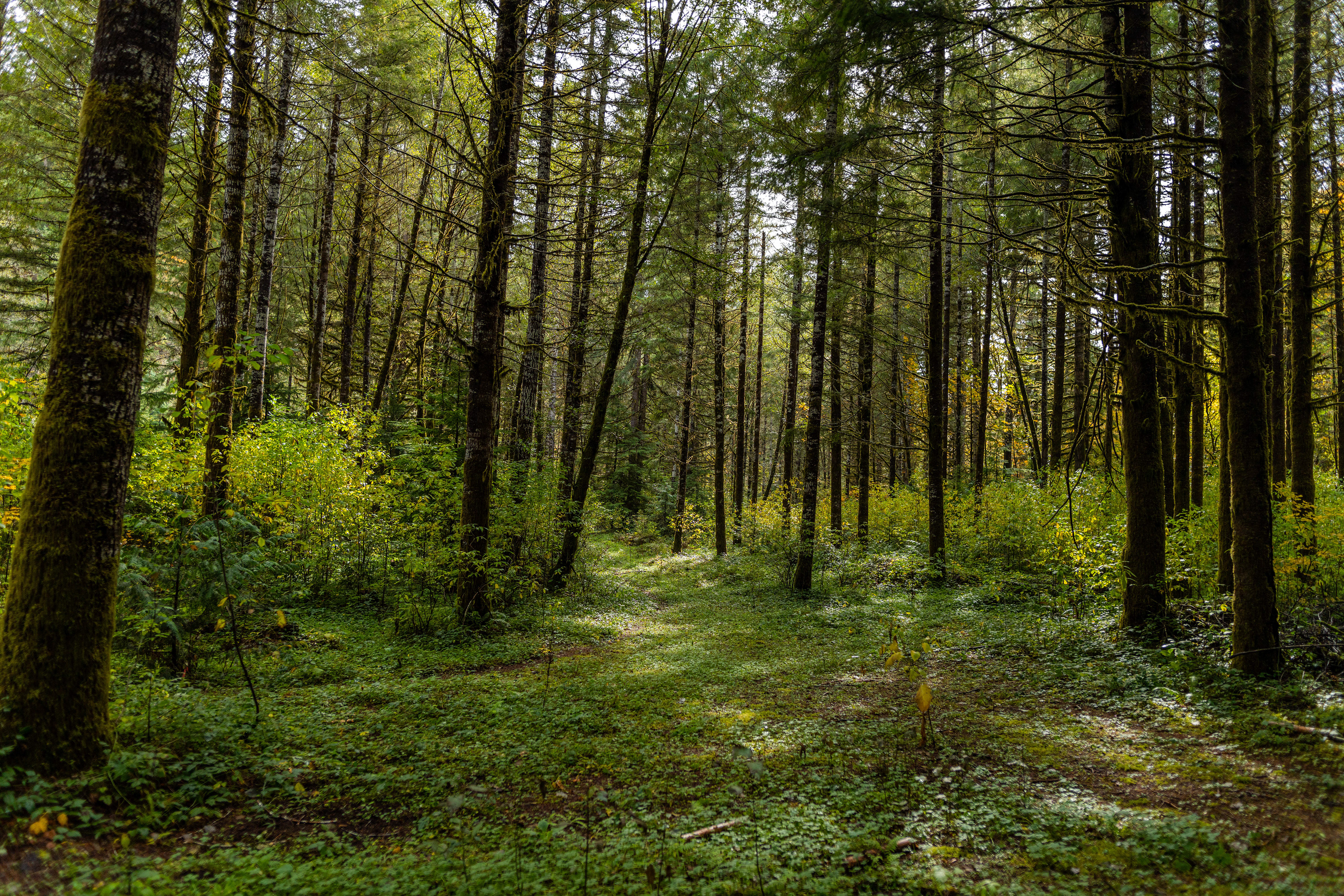

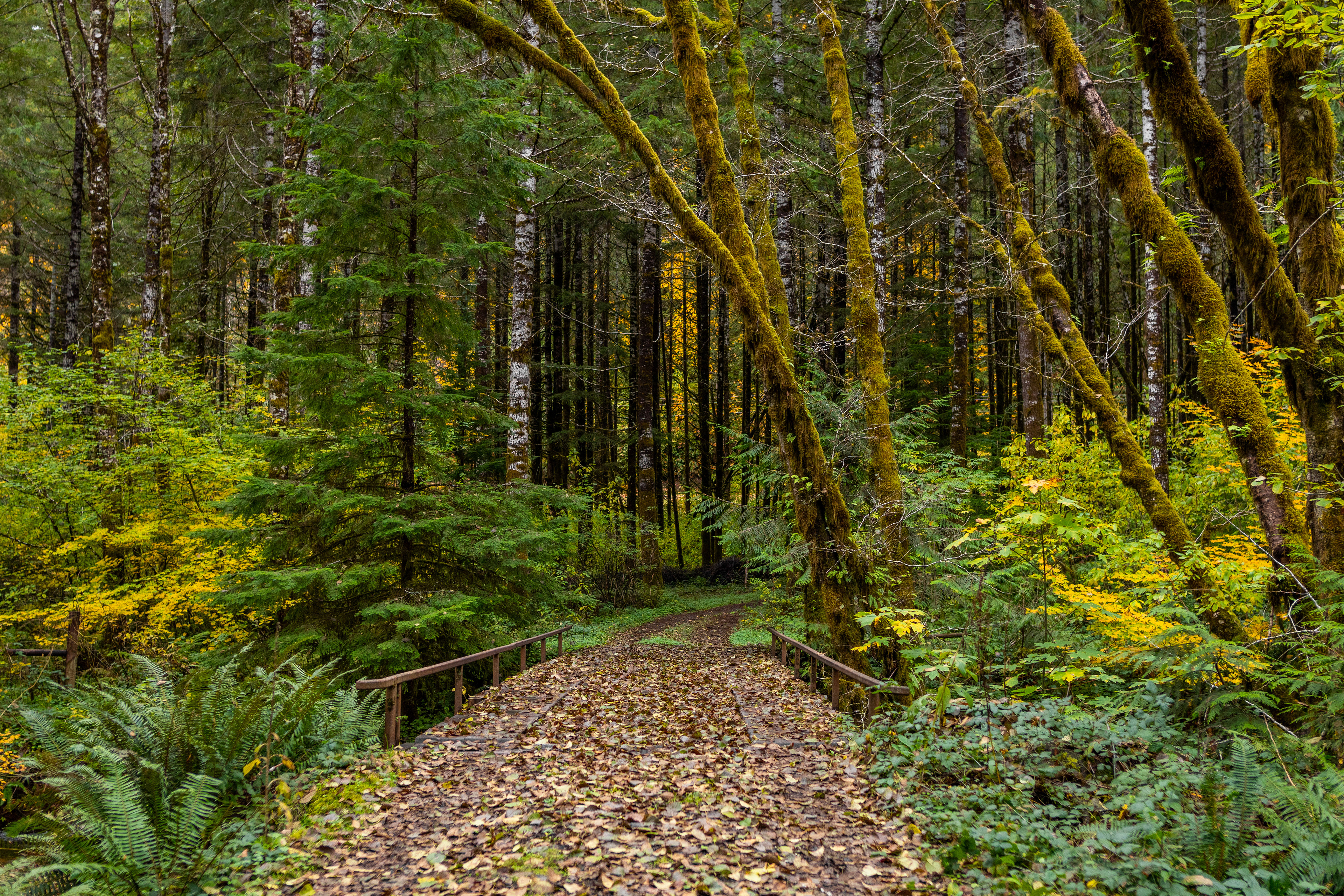
While this may look like a healthy forest, many of these trees and plants are the same species.
While Oregon’s neighboring states maintain a relatively healthy percentage of designated wilderness—Washington and California preserve 10 and 15 percent, respectively—and adequate laws to protect it, Oregon’s undisturbed, public wilderness only amounts to about 4 percent of the state’s expanse according to Oregon Wild, a non-profit that looks to reform Oregon’s forestry laws. While typical logging operations replant the trees they cut down, they tend to plant only with the same species, causing a lack of biodiversity that inhibits the forest’s ability to support varied plant and animal life as it matures. “Forests” like these are only grown to be logged, decade after decade.
"Any way we could describe the functions or services of a forest… those functions aren’t happening. We don't have a cycle that can sustain itself; 99 percent of the biomass in what we can see is one species," says Jason Gonzales, the Forest and Watershed Campaign Organizer for Oregon Wild. “If you clear out a grassland and plant a corn crop, it doesn't matter that corn is a grass. You do not still have a grassland.”
The absorption of carbon by trees and plants, called carbon sequestration, allows the storage of carbon for long periods of time in mature forests. When a forest is clear-cut, the logs burnt or left to decompose release carbon that is then freed into the atmosphere, contributing to the warming of the planet and climate change. This doesn’t even take into account the carbon emitted by logging procedures and equipment that process trees for sale as lumber. This, the entire logging process of Oregon’s forests and tree farms, is the largest contributor to carbon emissions in the state, accounting for 35 percent of total emissions.
"Decomposition and carbon loss from that initial logging takes 20 years before it's done releasing all the carbon because it does so much damage to the soil, the roots, the stumps,” says Gonzales. “It's actually releasing more carbon than those trees are absorbing every day.”


A logging truck drives by, noisily lugging tree thinning tools through the forest.
Logging is not just a huge hit to forests and the atmosphere, but also to Oregon’s streams and watersheds. The herbicides used to quickly regrow tree farms often seep into streams used for drinking water due to a lack of effective laws governing “setback zones,” or the area bordering either side of a river or stream. For example, as of early 2018, the Willamette River and Millrace Slough have a 100-foot and 40-foot setback, respectively, according to the City of Eugene. Though still inadequate protection against seepage, even this suburban region has better regulations and larger setback zones than most rural areas. Due to the heavy rain and constant erosion of Oregon’s riverbanks, the chemicals used to farm and regrow trees near the rivers can and do often find their way into the water and surrounding riparian ecosystems.
Living near a wide stream, Gonzales remembers watching salmon migrate with his family in the early years of the decade. However, living downstream from a large parcel of land owned and logged by Roseburg Forest Products, in more recent winters, the stream has run brown—choked with dirt and chemicals typical of logging operations—and all but devoid of salmon. This stream also serves as a drinking water source for residents in the area.
"In most of Oregon private land, you can't go more than about 1,000 feet at most between one stream and the next one," says Gonzales. "With 175,000 acres of clearcutting logging in the state last year, so much stream was damaged and clear-cut right over."
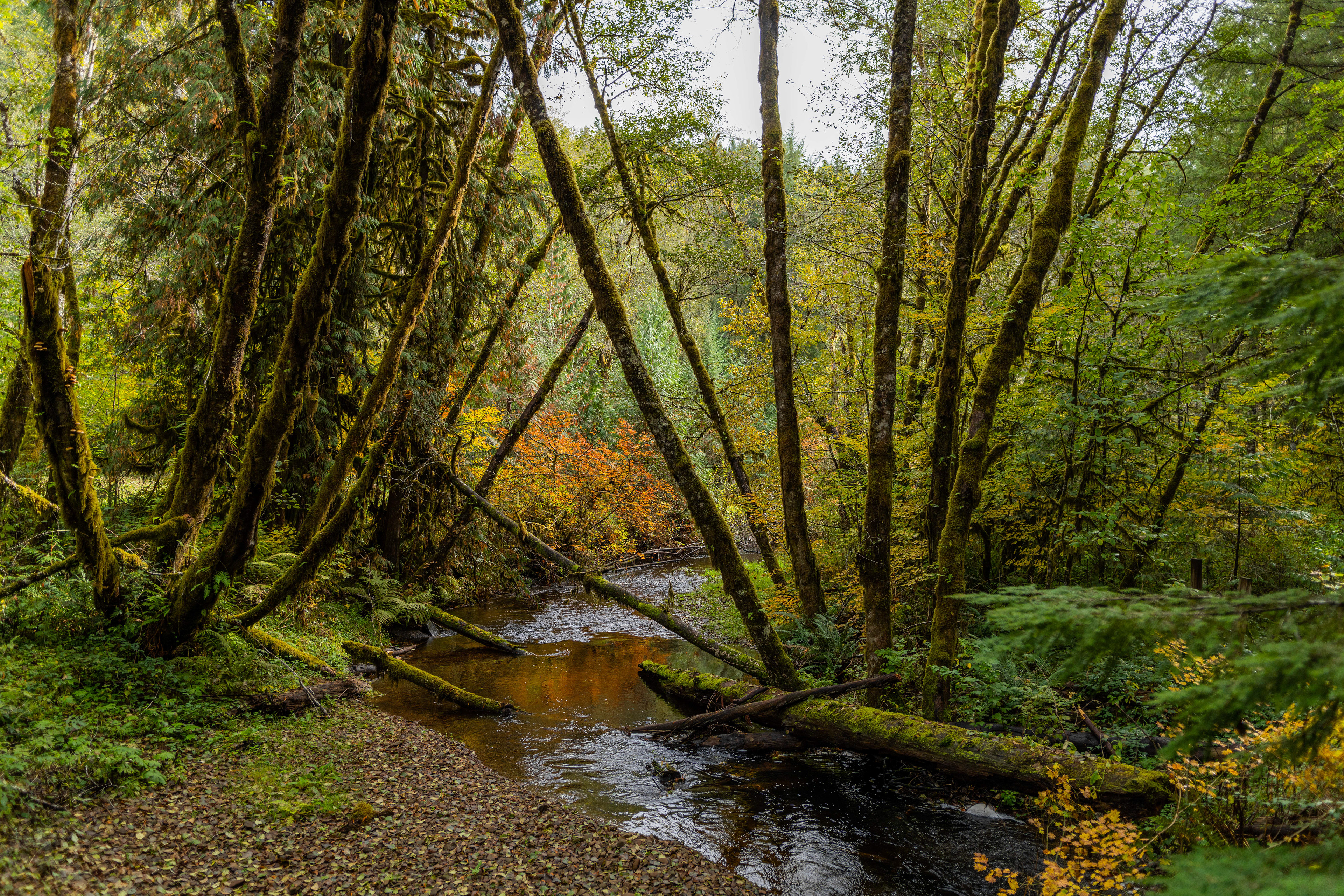

Even though this forest is protected, streams running through the land are often polluted by herbicides used on properties further upstream.
Roughly 64 percent of Oregon’s forests are classified as government forestland, much of it owned by industrial corporations—such as Weyerhaeuser and Seneca—while only 12 percent is owned by small private landowners, according to the Oregon Forest Resources Institute (OFRI) website. The total amount of private land in the state has decreased over the last 20 years as landowners sell their forests and acreage to keep up with rising costs of living and health care.
Art Paz, a small landowner just outside Eugene, has fought constant battles with industrial logging corporations to protect his organic blueberry crop, even blocking the road at one point to prevent a nearby, newly purchased industrial property from being sprayed with pesticides and herbicides. Arguing that this spray would leak onto his property and that of other nearby landowners, Paz was prepped with soil samples and a no-harm agreement signed by him and his neighbors, eventually causing the offending corporation to sell their property and move out a year later.
"There are high school kids that catch a bus within 500 meters or less of where [they were] going to be spraying,” said Paz, not only concerned about his own crop but about the human impact of these chemicals.
A Vietnam War veteran, Paz likened a popular herbicide--known as 2, 4-D --to Agent Orange, used to kill off dense vegetation to allow the forces to spot enemies, and has since been identified as the cause of a plethora of human diseases with both short and long-term impacts. While a harmful component of Agent Orange—called 2, 4, 5-T—was banned in the 1980s, many industrial loggers often mix various kinds of herbicides, creating dangerous concoctions with similarly severe threats to human health.
Small landowners such as Paz stand to prove the benefits of organic and sustainable practices. Logging by small landowners, who often look to make a living off their own land, tend to replant heterogenous trees (termed "proforestation") and ensure sufficient attention to leaving streams and riparian areas undisturbed.
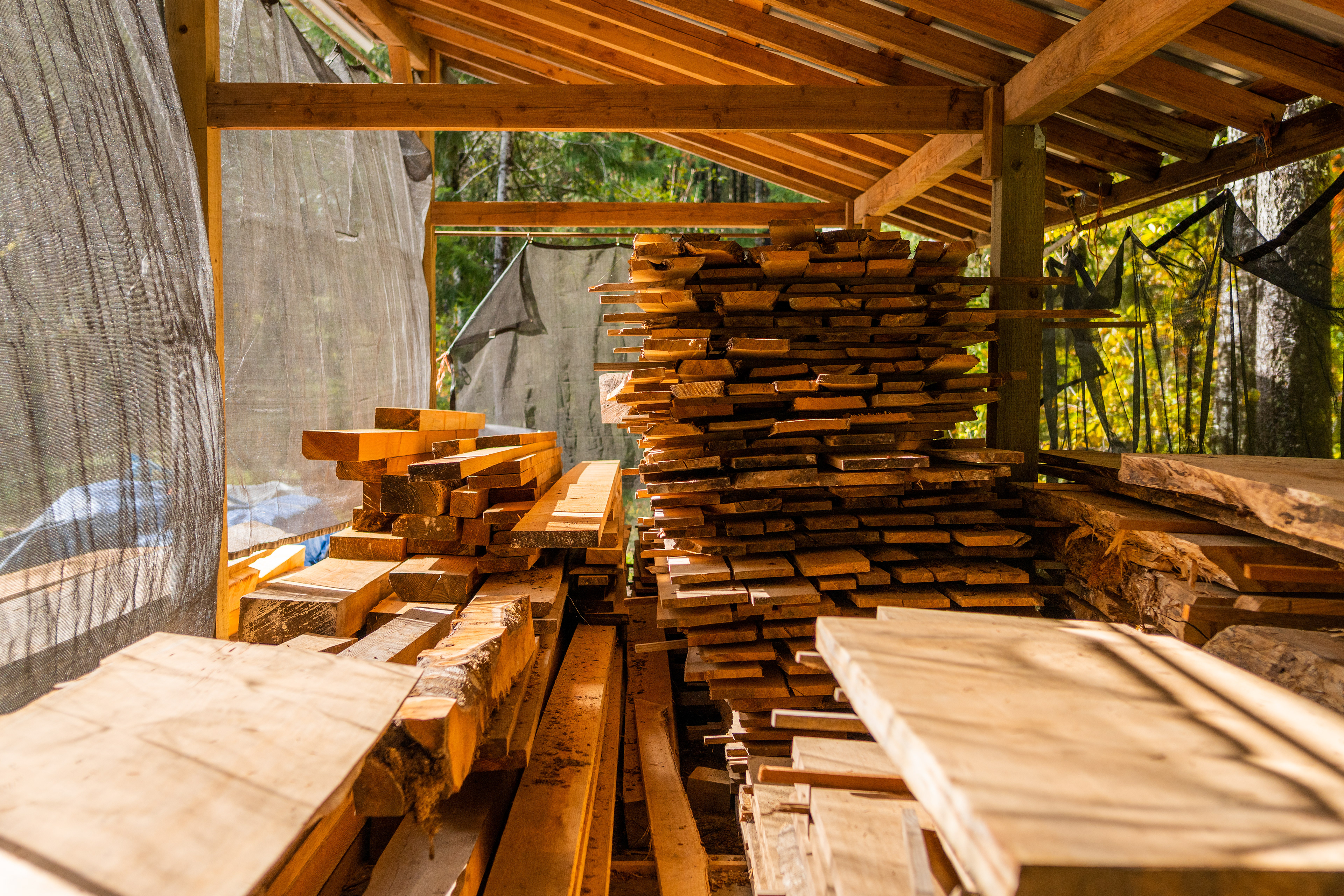
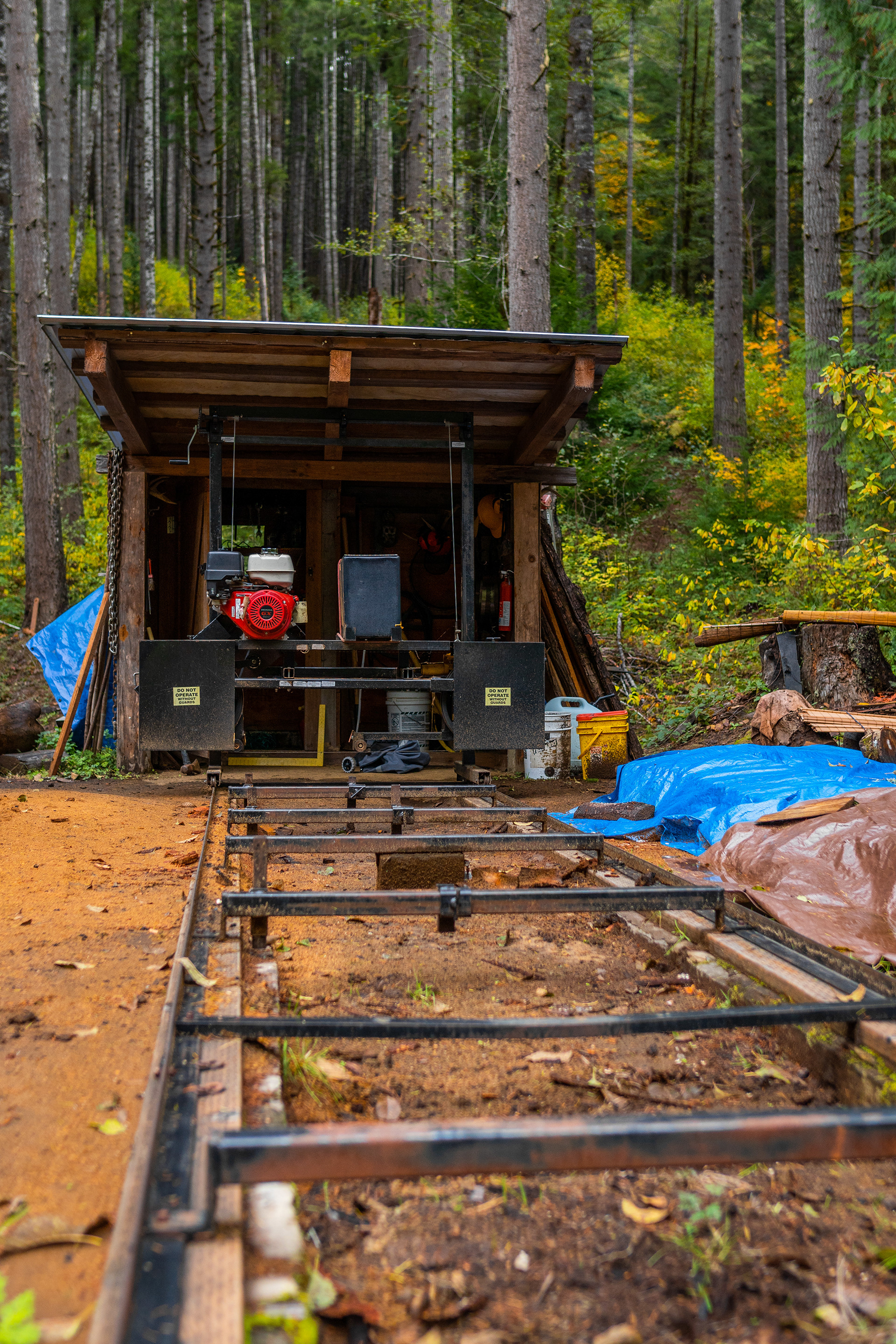

Small-scale, independent logging practices are much more sustainable and beneficial to the environment than corporate logging.
With a timber industry driving for ever-greater efficiency and profits—shorter term goals that incentivize a lack of regard for environmental impacts--Oregon Wild and similar organizations look to improve Oregon’s laws and regulations surrounding logging practices, setback zones, and the use of pesticides and herbicides. Stronger regulation has the potential to make it more difficult for industrial logging corporations to continue polluting the soil, air, and streams of rural Oregon. Requiring safer and more sustainable practices will help preserve the diverse and luscious flora and fauna for which Oregon is known and treasured and protect its residents against unwitting harm.
Not only would reforming lumber regulations benefit the region’s ecology, but perhaps it has the potential to help the economy as well. Gonzales describes the benefits of a more ecologically informed population: "If we actually invested in Green New Deal-type infrastructure, where we were seeing a value in this and willing to pay for it as a society, the job creation would be enormous and the ecosystem benefits would be even bigger."